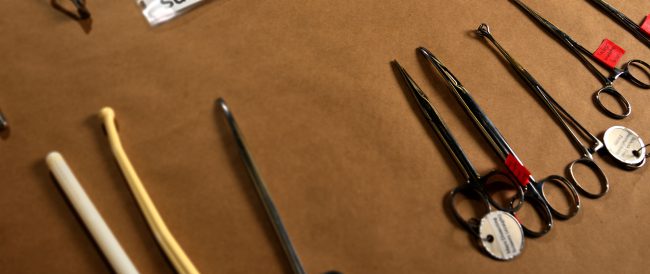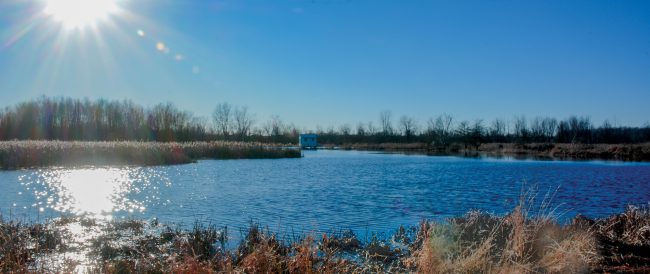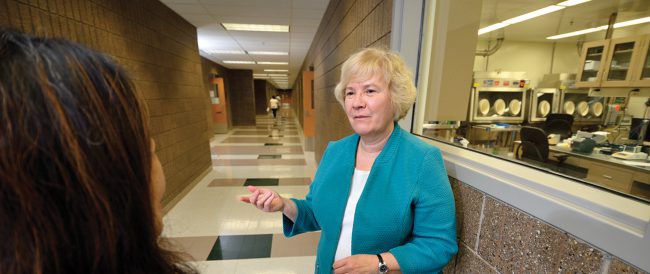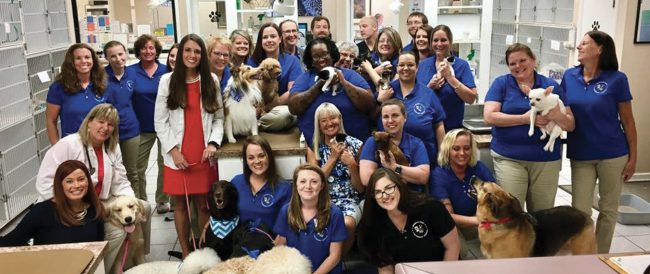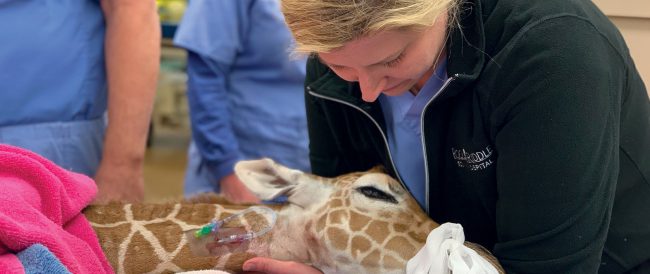 Read More
Read More
Dr. Jen Owen, associate professor for the MSU colleges of Agriculture and Natural Resources and Veterinary Medicine, has repurposed a piece of MSU property with the help and support of MSU’s AgBioResearch. She is developing an interdisciplinary research program for wetland restoration on the previously retired Muck Soils Research Farm, now called the Corey Marsh Ecological Research Center. The program will provide research, education, and outreach opportunities for MSU faculty and students, as well as the public.
“AgBioResearch was selling the land where the Muck Soils Research Farm stood for more than 70 years. I just happened to find out about it,” says Owen, center coordinator for Corey Marsh.
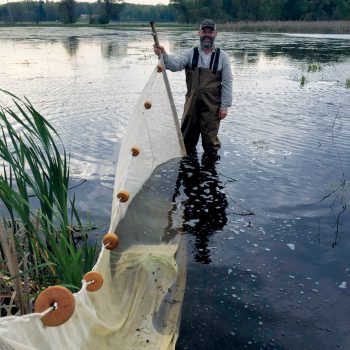

Corey Marsh is a large—almost 350 acres—open wetland that is part of the Looking Glass River Watershed. The land is the remnant of the 7,000 acres of swampland that was granted to MSU through the Swampland Act of 1850. MSU’s research there began in the 1930s with the Muck Soils Research Farm, which closed in 2012. Now, Owen and her collaboraters are breathing new life into the property.
Corey Marsh is overgrown with invasive plants like narrow-leaf cattails and reed canary grass. Owen wants to see the habitat restored as closely as possible to its natural state, a wetland prairie. To do this, Owen and her collaborators will develop a research program that may prescribe and evaluate diverse methods, such as controlled burns, hunting regulations, flooding, trapping, tagging, removal of plants, and other proactive and rehabilitative tactics.

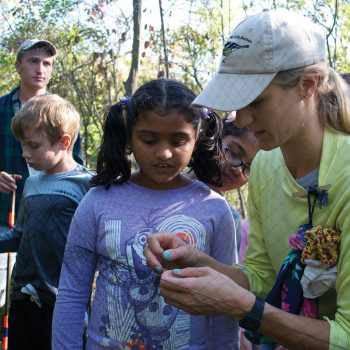
Restoring and preserving the land will allow for a diverse community of organisms—from soil microbes and plants to birds and mammals—to thrive. But, she can’t do it alone.
“We’ll need a hydrologist, restoration ecologist, entomologist, botanist, an ornithologist—all different kinds of disciplines are necessary in the oversight of such a broad goal that includes so many details,” says Owen.
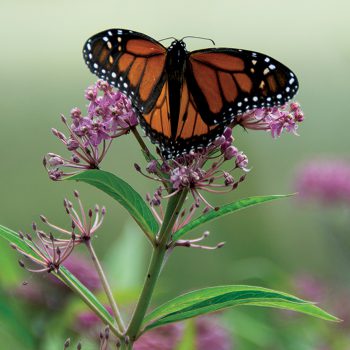
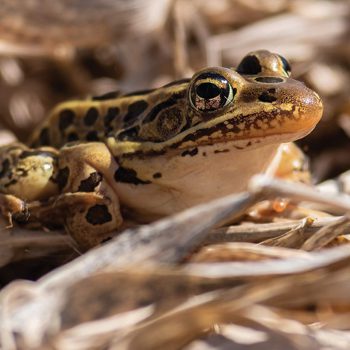
“The research done here needs to be collaborative—no silos—with people working across units within MSU, as well as with our external partners,” she continues. “And we need to engage the public every step of the way. People become more invested in the outcomes when they can be part of the process.”
That goes for students, too. Owen wants to see existing courses take place at the research center to enhance experiential learning opportunities for undergraduate and graduate students. She also wants to include science communication training.
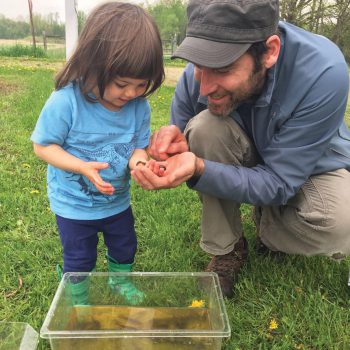
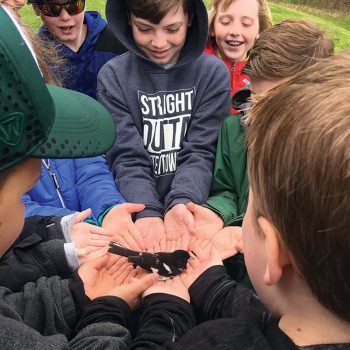
“The students can see the reward of engaging with the community. It’s making sure we relay information in a way that makes people feel included, and that’s critical in communicating the importance of our work to the public,” says Owen. “It’s amazing to watch a child or adult see a bird take off from their hand. Their whole face changes, there’s a look of absolute wonder. Then, we can talk to them about habitat and the resources the birds need to survive, and they pay attention because they care.”
Community engagement at Corey Marsh is about more than outreach; it includes collaboration. To fully revamp Corey Marsh so it has the capacity to fit Owen’s vision is going to take a lot of work, but some community members have already started putting in the time and elbow grease. They painted the barn, office, and picnic tables; removed fencing; and assisted with various events.
“The collaborative culture at MSU is hugely important in bringing knowledge from different spheres together, and it’s helped me to learn about interacting with the public in meaningful ways to share information and promote health solutions.”
“Without the hundreds of hours invested by our many volunteers, we would not have been able to accomplish half of what we have this year,” says Owen.
Since May 2018, Corey Marsh has hosted bird banding programs for youth and adults, a Perseid meteor shower viewing in cooperation with the MSU Abrams Planetarium, MSU departmental and community picnics, a Bioblitz event, MSU Science Festival programs, and public health classes about tick identification and tick-borne diseases. Corey Marsh also created a 1.5-mile walking trail, installed bat boxes created by MSU’s Student Bat Association, and hosted a station for capturing and tagging deer, with discussion about chronic wasting disease research.
On the horizon, Owen sees many infrastructure improvements, native prairie and backyard wildlife habitat demonstration areas, a discovery center with classroom space to engage students and visitors, a field house to provide short-term housing for seasonal crews and visiting scientists, and boardwalks, observation blinds, and platforms that are compliant with the Americans with Disabilities Act.
“We want this to benefit everyone—from the plants and animals our research will impact to students of all ages across Michigan who want to learn more about the world they live in,” says Owen. “I think that people aren’t connected to the outdoors like they used to be, and this is a way to connect them to the outdoors, get them excited about science, and realize that science isn’t scary. Science is cool.”
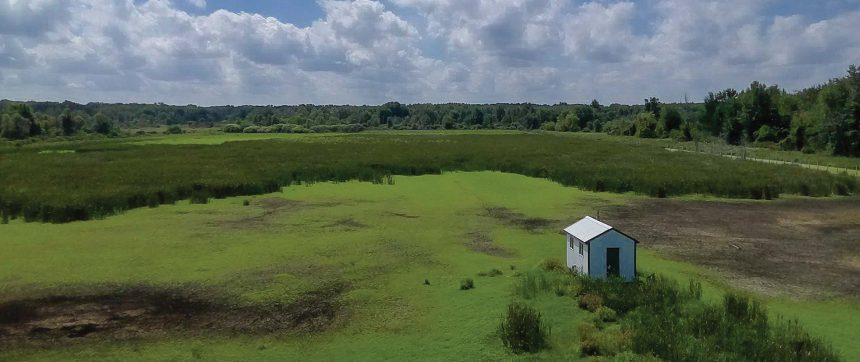
Spartan Story: Working Together

Dr. Jean Tsao, associate professor for the colleges of Agriculture and Natural Resources and Veterinary Medicine, is just one of MSU’s many researchers whose work connects back to human and animal health. For her, it’s all about the creepy crawlies—namely, ticks.
This fall, Tsao is leading a clerkship at Corey Marsh—Wildlife Disease Ecology and Conservation Medicine—for fourth-year veterinary medical students to study the ecology of parasites including ticks, the Lyme disease bacterium, and other disease-causing organisms. Students will trap small mammals, mist net birds, search the animals for ticks, take ear punch biopsies from the mammals, and take blood samples from all animals. Then, students will identify and test the ticks, ear tissue, and blood samples for the pathogens that cause Lyme disease, Borrelia miyamotoi disease, and anaplasmosis.
“My lab and I conducted surveillance for the Lyme disease tick and bacterium at the nearby Rose Lake Wildlife Research Area from 2004 through 2009, but detected nothing,” says Tsao. “But since 2009, we’ve seen the ticks moving in, and our students will be able to investigate to what extent the ticks and pathogen have become established and try to hypothesize the factors behind that shift.”
This shift in the tick landscape isn’t exclusive to Corey Marsh; the tick population in Michigan is increasing and expanding its distribution every year.
“From a research standpoint, what’s happening in Michigan with tick-borne diseases is interesting because it’s so dynamic,” says Tsao. “The ticks are spreading, so there’s a lot of opportunity to learn about how ticks and diseases spread, and also to see how we can reduce the risk of tick-borne disease to the public.”
For Tsao, elucidating the ecology of ticks and Lyme disease is only part of the reward. The One Health component of her work naturally bleeds into veterinary and public health. Not only has Tsao been able to share her knowledge about tick ecology and disease risk with veterinarians, but through research funded in part by the MSU College of Veterinary Medicine’s Endowed Funds, a network of veterinarians across the state of Michigan has helped enhance the statewide surveillance for ticks and understanding of Lyme disease risk.
Transdisciplinary connections have further facilitated efforts to proactively educate Michigan citizens. For Tsao, it’s been productive to collaborate with colleagues, not just on campus, but also at state agencies like the Michigan departments of Health and Human Services and Natural Resources.
Since collaboration is the backbone of Corey Marsh, Tsao fits in well as one of the contributing researchers.
“Every researcher is trained in something specific,” says Tsao. “The collaborative culture at MSU is hugely important in bringing knowledge from different spheres together, and it’s helped me to learn about interacting with the public in meaningful ways to share information and promote health solutions.”


